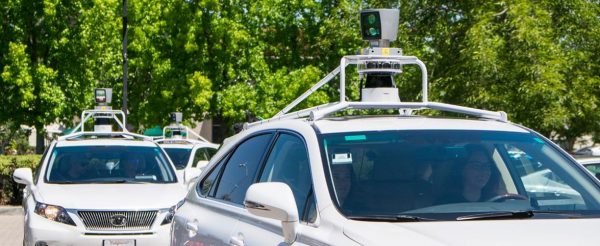
Technical problems, state and national regulations, and insurance companies are all serious constraints to adoption of self-driving cars
The world is abuzz with the prospect of fully autonomous vehicles, abandoning private car ownership for “Transportation as a Service,” and cheap transportation costing 10 per cent of current rates – all backstopped by the futuristic predictions of Elon Musk and the cocky scholarship of Stanford lecturer Tony Seba. But not everyone in the auto industry is buying the hype.

“November or December of this year, we should be able to go from a parking lot in California to a parking lot in New York, no controls touched at any point during the entire journey,” Musk told a TED Talk audience in April, adding in response to a question that he thinks Level 5 fully autonomous driving is only two years away.
Seba released a groundbreaking study last month in which he predicted that the TaaS business model combined with fully autonomous cars would revolutionise American transportation by 2030, cause consumers to abandon private vehicle ownership, and destroy the global oil industry (see my columns here and here and here and here).
But those predictions come with plenty of caveats, such as this one from Musk: “Once you solve cameras for vision, autonomy is solved; if you don’t solve vision, it’s not solved.”
Lux Research analyst Kyle Landry, whose team specialises in autonomous driving, says technical challenges like Tesla’s will take a decade or more to sort out, and those are hardly the only constraint to fully self-driving cars.
“Tesla, Nissan and Ford are saying that by January 1, 2020 they’re going to have autonomous vehicles on the road, but what’s their idea of a fully autonomous car? If it’s a level 4 or level 5. driving in any condition, any environment, any weather – that’s a moonshot,” Landry said in an interview.
“Our forecast shows that before 2030, we barely see a sliver of that optimistic scenario, of [fully autonomous] new vehicles rolling off the production lines.”

Self-driving cars struggle with the same challenges that flummox drivers, says Landry: new places, inclement weather, and bad traffic.
“Humans still struggle with these issues and yet we’re expecting these systems to completely master them in any kind of geographical region, all kinds of cultural and regional changes?” he says. “It’s very tricky to figure out.”
Another huge challenge is regulation. In the United States, which is leading the charge to self-driving, the development of the technology and the design of vehicles is a federal responsibility, but the actual driving rules are set and enforced by the state.
Automakers have to negotiate this patchwork quilt of regulatory agencies, which is no small feat, according to Landry. States have only given permission to test self-driving cars in the past year or two.
“It takes federal regulators approximately eight to 10 years to get mandates out there and get legislation cleared up, and they’re fighting with it,” he said.
“Because of the combinations of these things, we do not see visible penetration of the market by fully autonomous vehicles any time in the near future.”
 Insurance companies are another hurdle. Dr. Fred Beach is the assistance executive director of the Energy Institute at the University of Texas at Austin. He says lawyers on the Institute’s faculty argue that insurance will be a significant constraint on the adoption of fully autonomous vehicles.
Insurance companies are another hurdle. Dr. Fred Beach is the assistance executive director of the Energy Institute at the University of Texas at Austin. He says lawyers on the Institute’s faculty argue that insurance will be a significant constraint on the adoption of fully autonomous vehicles.
“I would think that the insurance industry would embrace [self-driving] because of the potential to greatly reduce accidents. but my legal colleagues say insurance companies are going to push back and not want to insure autonomous vehicles, which to me is contradictory,” he said in an interview.
“But the lawyers are saying, ‘Not until there are trial cases, not until you’ve got a couple of autonomous vehicle-on-driver-vehicle [accidents], and autonomous vehicle–on autonomous vehicle accidents. Until you get some case laws setting precedents about how these things are going to be handled, where the risk is going to be placed, who’s going to be held at fault, what’s going to be held at fault.”
Liability is a huge issue, says Landry. In most states, a vehicle cannot be defined as a driver, which leads to confusion over how to assign liability in the event of a crash.
“Who’s to blame? Is it the automaker? Is it the systems integrator who put it together? Is it the sensor developer? Is it the company that’s developing the algorithms? Who specifically is to blame?” asks Landry.
Industry and regulators are just beginning to grapple with those issues.

Two years ago, a 2015 Tesla Model S being driven in “Autopilot mode” collided with a semi-tractor trailer crossing an uncontrolled Florida intersection, killing the Tesla driver. Crash investigators determined the Tesla’s Automatic Emergency Braking did not provide a warning, nor did it apply the brakes before the collision.
Was Tesla to blame? The National Highway Safety Administration said no, arguing that the systems “have limitations” and wasn’t designed to handle the situation confronting the car and driver that day.
How do you design for every possible situation? asks Landry. Especially when vehicles are moving at high speed and could be confronted with any number of unanticipated circumstances?
Despite the enormous hype by automakers like Musk – and he’s not alone, by any stretch – development and deployment of autonomous driving is not happening any time soon. Certainly not soon enough to revolutionize the automobile and oil industries by 2030, says Landry.
But self-driving cars are not that far off, says Landry, pointing to very limited experiments in markets like Sinapore that are showing some initial success.



1 Trackback / Pingback